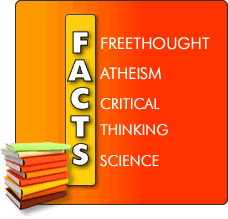-
In total there are 3 users online :: 0 registered, 0 hidden and 3 guests (based on users active over the past 60 minutes)
Most users ever online was 871 on Fri Apr 19, 2024 12:00 am
Units of Selection
-
Ani Osiris
Re: Units of Selection
Not to be lost in this analogy is that fact that the whole idea is to win the race, not to pick out all the individually best oarsmen.Let's suppose you were able to determine which oarsman was the best at each position. Does placing those best of the best in the same boat guarantee that you'll have the fastest boat possible? No. Joe's stroke, say, is very powerful so on average he is in a winning boat. But Joe's stroke is long and fouls the oars of those in front of and behind him when theirs is not equally long. Similarly with Sue, who tends to be in a winning boat because her stroke is short and rapid. Put them together and you have a crew that is unable to move, much less win a race. So, you put in a coxswain who can regulate the timing and length of the strokes (note the lack of any significant role of regulatory genes in Dawkins' model, so it already has a serious flaw); but when you shorten Joe's stroke and slow Sue's stroke, they lose what, individually, made them good strong oarsmen and you end up with a slow boat.Ok, so you assign a much higher fitness value to the oarsmen with the teamwork quality, but how do you do that when, as with Dawkins' model, all you have are particulate genes? Dawkins gets terribly vague at this point because it doesn't really work. Chemistry is nothing if not strict in its reactions, so there is no generic 'cooperative' gene in the sense that one particular sequence can work with a large variety of others to yield the same effect - it has a specific and different effect with each. In other words, because they are all specific effects, the apparent cooperative trait is really an illusion - remember, there was supposed to be a 'teamwork quality' that made all this work, but the floor just dropped out from under the argument since there's no longer any trait or gene for selection to actually work with. So you're back in the boat with Joe and Sue, and cooperation remains totally unexplained.However, if you toss the notion of the selfish gene, I think you're in much better shape. Then you can include factors of process and organization in a real sense instead as a product of population genetics. Instead, say, Sue is in love with Bill and when she's in his boat her efforts are doubled (i.e. Bill is the equivalent of a chemical catalyst). Now, there's something that will not only give your boat an advantage, it's likely to blow the other boats completely out the water. The advantage is only with the boat as a whole, not for the oarsman invidually; and it arises from the specific chemistry between Bill and Sue. You do not necessarily need natural selection to explain cooperation in the sense of constituents working together either selfishly or altruistically, and perhaps it's an inappropriate explanation - all you need is basic chemistry. More generally, you have systemic properties which set basic patterns and influence the evolution of the constituents. As a shaping factor, something like autocatalysis is at a more fundamental level than selection - meaning 'cooperation' is built into the very structure of life from the get-go, it does not result from an amplification of or a dependency on the properties of the individual constituents.

